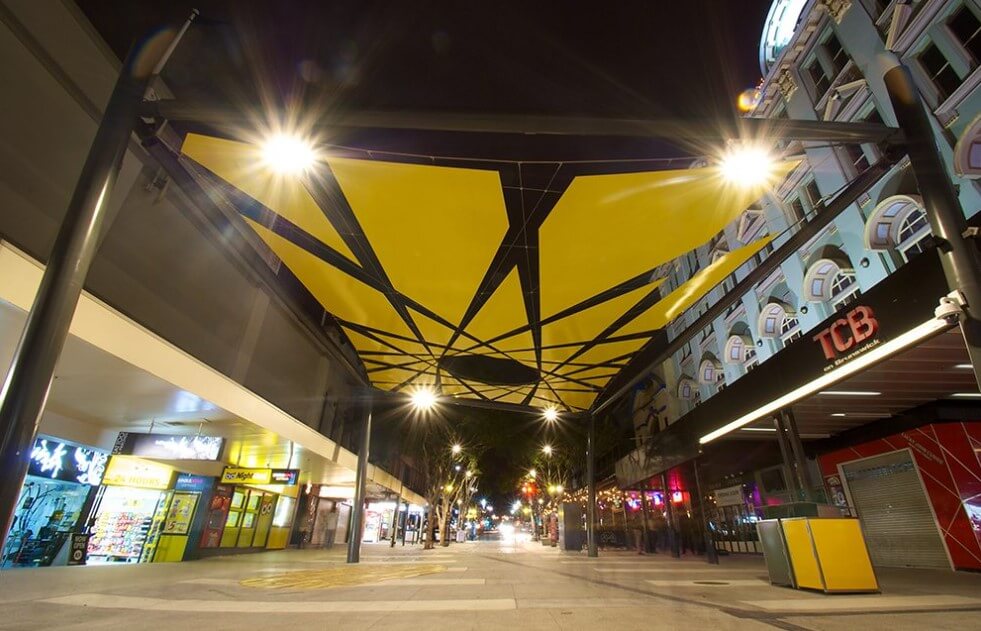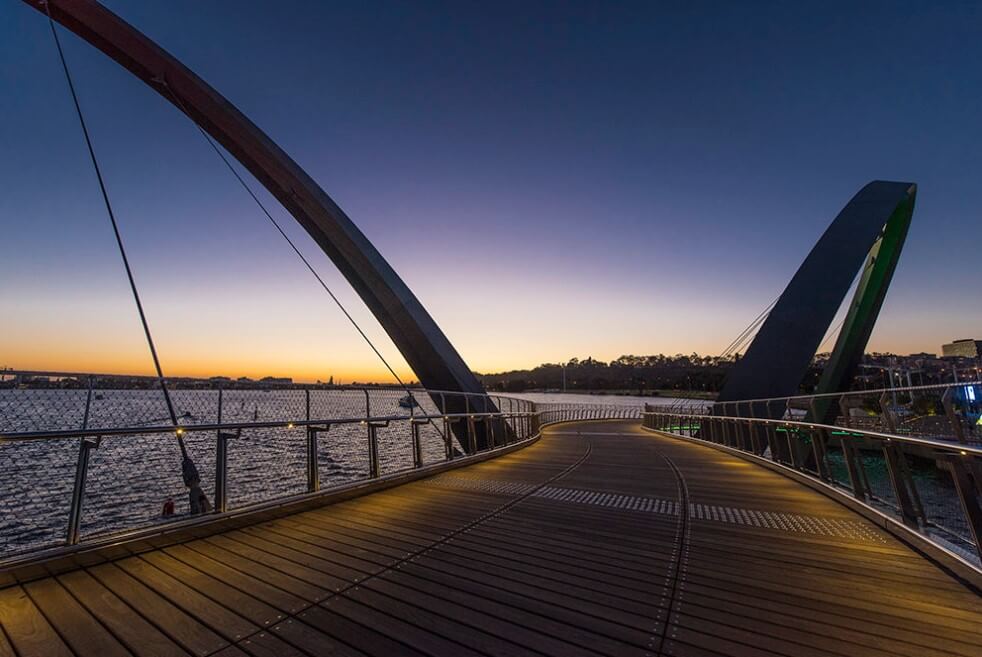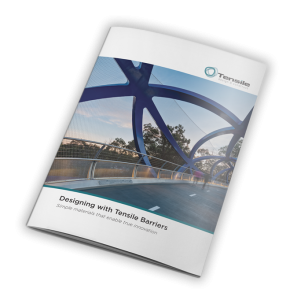Tensile structures date back to ancient times. They are a form of light construction that is kept stable through tensioning. This contrasts with conventional buildings where stability occurs through gravitational forces and compression.
Typical examples of tensile structures include large circus tents and sports stadium coverings made from membranes stretched across supporting posts.
The advantages of tensile structures include flexibility of form, capacity for large spans, low maintenance requirements, reduced need for materials and faster construction. They also allow for temporary construction that can be dismantled and moved to a new site later on.
When correctly engineered and tensioned, tensile structures have strong wind resistance. This is why a structure such as the Myer Music Bowl in Melbourne has remained standing for so many decades. Additional treatments such as waterproofing coatings and use of UV-resistant materials also allow for extra protection from the elements.
The principles of tensile structure can be applied to the use of stainless steel cable mesh, such as Jakob Webnet. When used in architectural projects, Webnet has some similar properties to fabric membranes – including malleability and large span capacity.
The mesh is supported by stainless steel posts and connections and can be used to create tensioned barriers, building facades, overhead shelters, hanging garden supports and suspended lighting or art installations.
Here are some examples.
Echo Orbit – suspended tensile structure in Brisbane
This tensile installation is an overhead art display that provides shade, shelter and lighting for the public. It comprises a series of brightly-coloured geometric plates and LED lights, supported by steel posts and 1,400m of customised stainless steel netting. As well as the netting, Tensile provided the cables, fittings and custom-made components, and contributed design and engineering expertise.
The finished project demonstrates some of the unique possibilities for tensile structures, way beyond that of fabric membranes.

Inglis Park Playground, Sydney
Safety barriers for children’s playgrounds require a flexible and customised approach. This is because they often come with unusual geometries and with varying tensioning requirements across structures.
The Inglis Park playground in Randwick is no exception. The tensioned 40mm x 1.5mm Webnet barrier acts as a safety net membrane over the circular climbing equipment. For this installation, we needed to balance load and deflection, and match cable tensioning to suit.
With its tensioned barrier in place, the playground provides hours of free play for children in maximum safety and visibility.
Elizabeth Quay Footbridge, Perth
Pedestrian/cyclist bridges need safety barriers, but not all footbridges run in straight lines! In such cases, tensioned Webnet mesh can provide an ideal solution.
The Elizabeth Quay suspension bridge in Perth forms an S-shaped curve across the Swan River. The designers wanted to provide the public with a 360-degree view from the bridge, which meant the design called for a safety barrier that was as transparent as possible. The barrier also needed to integrate with the existing balustrade, following its curves and twists, while resisting the impact of wind.
To create the barrier, we used 50mm custom-designed Webnet netting, taking a modular approach by sizing the mesh into panels to match the on-site curves.
The result is a tensile barrier that is light in appearance but extremely robust in nature – meeting the brief for minimalist design and maximum safety.
Want to know more about Tensile structures or discuss your project idea? Please get in touch!







































